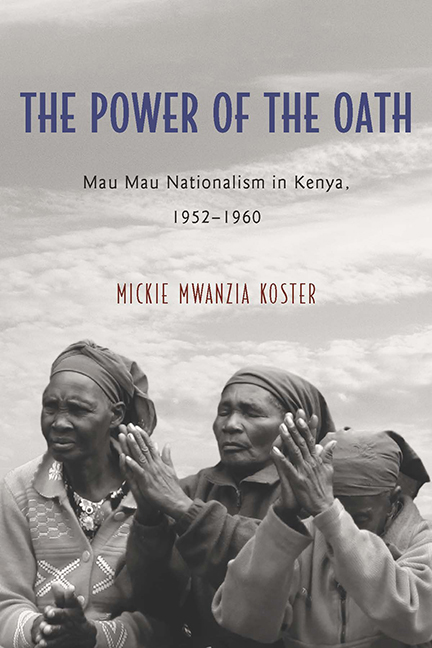6 - Mau Mau Oath Purification
Published online by Cambridge University Press: 07 May 2022
Summary
The oath cleanser cleansed me of the Mau Mau oath.
—P. Musuo, January 2009Mau Mau oathing required cleansing, a process that did not exist prior to the 1950s. However, Mau Mau oath actions and radicalization created impurities that required a cleansing ritual to end the oath process. This cleansing and purifying process was first established in the villages and later also used by the government and Christian churches as a means to spiritually cleanse Mau Mau fighters of the oaths taken. This was not a process experienced by all Mau Mau oathers. This is important because although most oath takers did not go through the purification process, it still reveals much about the nature of the Mau Mau oath and the importance of regulating oath curses and impurities. In the case of the Kamba who were cleansed of the oathing, especially in the village setting, we are able to uncover hidden Kamba belief systems of restoration, sustainability, and protection that are the focus of this chapter.
Mary Douglas deals with the concepts of purity and impurity that prove useful in understanding this new Mau Mau oath to purification relationship. Although Mau Mau was a religious and spiritual act, it also contaminated participants who needed to be purified before they engaged in what van Gennep and Turner describe as the third stage of ritual reintegration into the society. The Mau Mau oath ceremonies involved ritual acts that were viewed for the first time as something unclean that required spiritual cleansing. This relationship represents a major break from the peaceful, truth-seeking, and rigid oath ceremonies that had clear taboos to protect the sacredness of the ceremonies. To understand this new relationship, it is first important to understand the nature of purification in Kenya. Similar to oathing, purification has historical roots in the precolonial past but has adapted over time.
In Kenya, the process of purification is associated with longstanding African knowledge of managing the fragile yet resilient environment. By definition, purification implies the presence of dirt or pollution that can pose a danger.
- Type
- Chapter
- Information
- The Power of the OathMau Mau Nationalism in Kenya, 1952–1960, pp. 129 - 150Publisher: Boydell & BrewerPrint publication year: 2016

